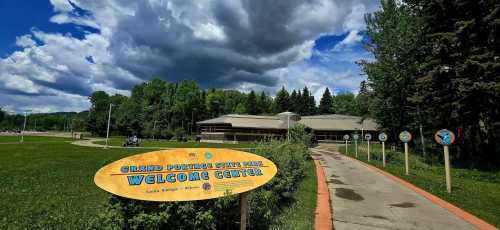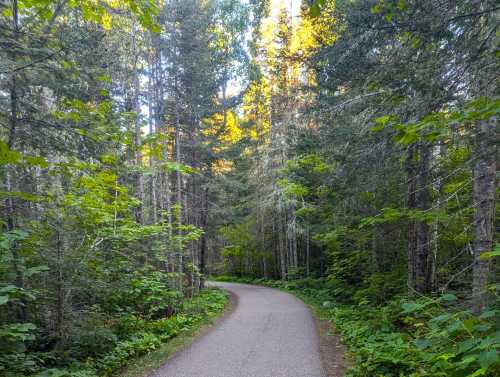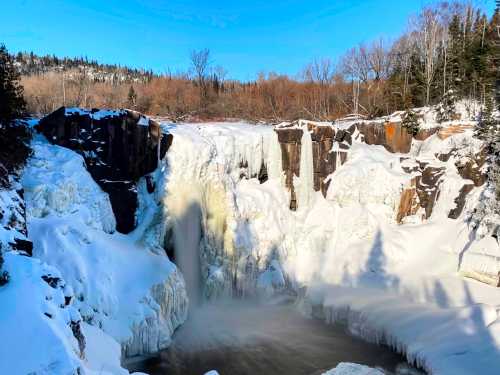I've lived in Minnesota my entire adult life and, as I've grown older, my appreciation for our state's natural beauty has only increased. I've visited 45 of our Minnesota state parks since 2019 and have set a goal of visiting them all. At the time of this writing, Minnesota is home to 66 state parks. In less than a month, that number will be 65, after a scheduled Minnesota state park closure on February 16, 2024. This month, I headed out to visit Upper Sioux Agency before it closes and to reflect on how this came about - and whether it should have ever been a state park in the first place.
In 2023, the Minnesota Legislature voted to return the land on which Upper Sioux Agency State Park sits to the Upper Sioux Community, the Dakota people who were originally permitted to retain the land - part of their ancestral territory - through a series of treaties in the 1850s.
You can see from this map that the park is immediately adjacent to the Upper Sioux Community.
This follows a 2019 road collapse which caused the only route connecting the park's two units to be permanently closed.
To access the Yellow Medicine River Campground by car from the Visitor Center, visitors were required to detour around the damaged section of road for more than 20 miles. At the time the legislature voted to return the park land, there were several pending infrastructure projects that would have cost taxpayers millions of dollars.
Upper Sioux Agency State Park was established in 1963 to preserve and interpret the remains of the Upper Sioux Agency.
The Visitor Center was open seasonally in the summer.
But the 1,280-acre park, itself, was open year-round (as you can tell by the snow on the ground during my January visit).
Upper Sioux Agency carries incredible historical significance for the Dakota people, as it was the site where the U.S.-Dakota War of 1862 erupted.
The reservation was 20 miles wide and stretched from Big Stone Lake in the west to Fort Ridgely in the east. All the Dakota people in the Minnesota territory and the state of Iowa were removed to this reservation.
The treaty of Traverse Des Sioux of 1851 established a reservation along the southern banks of the Minnesota River.
The Upper Sioux Agency was established to administer the terms of the treaty.
However, after a poor harvest in 1861, the appointed agent refused to release the food and money that were due to the Dakota people on the reservation for months. People were dying of starvation and illness.
In August of 1862, several Dakota determined that the United States had broken the terms of the treaty and declared war to reclaim their homelands.
The Upper Sioux Agency was one of the sites destroyed in the war. Of the buildings that once existed on the site, only one of the employee duplexes still remains. I found walking around this site particularly eerie.
The war raged up and down the Minnesota River valley for six weeks until peace was reestablished.
Over the course of the war, hundreds of Dakota people and settlers were killed. In December 1862, 38 Dakota men were hanged at Mankato for their part in the war. It remains as the largest mass execution in United States history.
In the aftermath of the war, more land was seized from the Dakota.
This included the land on which Upper Sioux Agency State Park and the historic site were established.
The Upper Sioux Community, which has re-established itself in recent decades through legal recognition of treaty rights, court victories, and outright purchase of its historic lands.
The Upper Sioux Community had a longstanding request that the State of Minnesota return the land on which the state park is located.
Not only is the land immediately adjacent to the Upper Sioux Community, it contains the Upper Sioux Agency site, as well as the confluence of the Minnesota and Yellow Medicine Rivers, a historically important place in Dakota culture.
As I stood atop a small rise on the bluff and looked up and down the river valley, I could see why it would be an important place to the people who had lived here for centuries before 1862 - and for decades thereafter.
After years of waiting, in 2023, the Minnesota Legislature granted the Upper Sioux Community's request.
I think it's encouraging, too, that the DNR has committed to establishing additional recreational sites in this part of the Minnesota River valley to replace those once available at Upper Sioux Agency State Park. In the meantime, you have a few weeks to visit this haunting Minnesota state park before its closure - and I recommend it if you you can make the trip. In the meantime, Lac Qui Parle State Park and Camden State Park are both near the area and offer excellent hiking and camping. And you'll find plenty of things to do in the Granite Falls area, where you can stay at a charming vacation rental cottage.
Do you have a chance to visit Upper Sioux Agency before the Minnesota state park closure? What are some other parks in the Granite Falls area do you recommend? Let us know in the comments!
Subscribe to our newsletter
Get the latest updates and news
Thank you for subscribing!



































